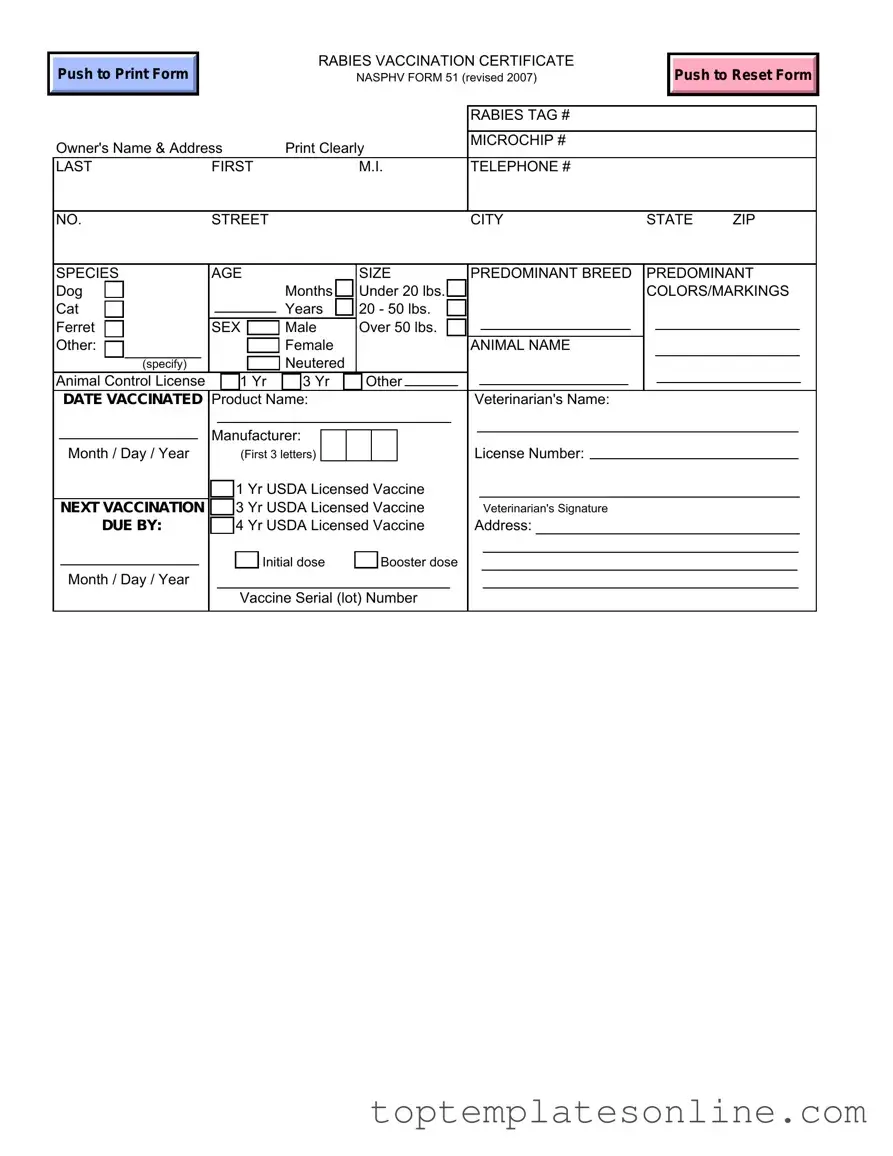The Rabies Certificate form is an essential document for pet owners, particularly those with dogs, cats, or ferrets. This form serves multiple purposes, including verifying that an animal has received the rabies vaccination, which is crucial for public health. Key details such as the owner's name, address, and contact information must be clearly printed. Additionally, the form requires specific information about the animal, including its species, age, size, and predominant breed. Owners will also need to provide the animal's microchip number, if applicable, and indicate whether the pet is neutered. The vaccination details are equally important; the form includes sections for the date of vaccination, the product name, and the veterinarian's information, including their license number. Furthermore, the form specifies the vaccination duration, indicating whether it is a one-year or three-year vaccine, along with the due date for the next vaccination. The veterinarian's signature and the vaccine's serial number are also crucial components, ensuring the form's authenticity and compliance with regulations. Overall, the Rabies Certificate form plays a vital role in maintaining the health and safety of both pets and the community.
